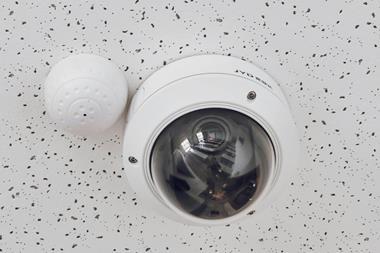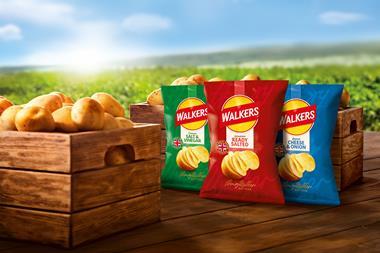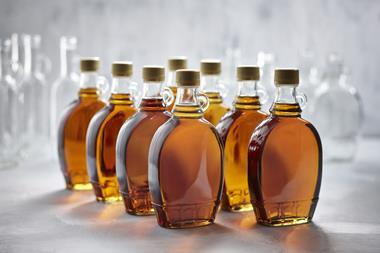FMCG marketing content is accelerating across platforms, putting pressure on those creating it to step up to the challenge. Yet technology such as digital twins could prove to be the best solution, says Moving Picture Company.
With marketing budgets squeezed more than ever before and the demand for content accelerating across platforms, marketers are in a tight bind. One potential answer to the challenge of content creation at scale is digital twins. The futuristic-sounding tech has the potential to become an indispensable part of an FMCG marketer’s toolkit, with applications far beyond ads.
Digital twins are so much more than traditional CGI, with near-endless render possibilities. Once created, a product’s digital twin can be deployed, infinitely and on any platform (even ones that don’t yet exist), alongside broadcast channels and traditional print. Agility, cost-effectiveness, and granularity are just a few of the benefits of using digital twins, making them the next must-know in FMCG marketing.
So, what are digital twins?
The technical explanation is that digital twins are 3D facsimiles of physical products. Simply put, they’re 3D versions of physical products that can be easily accessed on demand and deployed in a multitude of ways.
While it’s easy to conflate digital twins with CGI, the two differ when it comes to production. Traditional CGI is linear, whereas the production of digital twins manages scale and asset creation. This means that digital twins can be iterated, almost endlessly, and rendered to a platform’s specifications.
Picture, for example, a product like a bottle of alcohol, which has a distinct shape with an oft-changing label. The vendor maintains a virtual library of products that can be rendered for different formats and updated with new and seasonal labels, as required. While a lot of the artistry between CGI and digital twins is the same, it’s the use of the final asset render that requires a different production model and management.
Digital twins and the beverage sector
Though digital twins are fairly new to the world of FMCG marketing, beverage brands have recently started to incorporate their use into their content plans. During the lockdown months of the pandemic, when the demand for content was at an all-time high but the capacity to physically create content utilising traditional production was extremely limited, the rate of adoption in the space grew dramatically – and the beverage sector, in particular, understood the scalability and agility of digital twins.
The immediate benefits under pandemic circumstances were twofold. Firstly, with digital twins, assets could be created efficiently and before the physical product itself was manufactured. This meant that everything surrounding the product launch, such as product description pages, could all be set into motion well in advance. Secondly, digital twins created more opportunities to market in innovative ways, and at scale. Instead of the traditional shoot, the assets of which were to be used in a single campaign, marketers thought outside the box and deployed the digital twins in AR applications, replacing some of the traditional photography, and that’s just the start. In fact, the economies of scale at play through the use of digital twins actually enhanced, rather than hindered, creativity.
Benefits of digital twins for the FMCG sector
As the beverage sector has already been taking advantage of digital twins, the rest of the FMCG market will soon follow suit. The benefits of using digital twins are plentiful as this new tech presents new opportunities and solutions to problems, as detailed below.
Future-proofing – rendered and ready for future platforms. Creating your product portfolio in 3D is a way to future-proof your content development, as they can be rendered for multiple platforms, even ones that don’t yet exist.
Agile and responsive. Easy-to-deploy digital twins where they’re needed most, making them highly efficient. Since marketing assets can be created before physical assets exist, problems like supply chain issues can be mitigated by swapping out products in ads and campaigns with ease.
Getting granular with content – updating ads/packaging by season with ease. Dynamic content optimisation for digital advertising includes digital twins of products in its equation. Also, updating product assets with seasonal or event specific content (for example, adding the Olympic Rings logo to a product) does not require a reshoot – just update the digital twin.
Consistent visual brand identity. A product portfolio in 3D allows product owners to easily maintain a consistent visual brand identity for product description pages across marketplaces and third-party sites.
Consumer experience: XR, AR & SX. A digital twin is a foundation asset for any XR application. For example, Augmented Reality applications require a 3D asset for the build. The digital twin of your product asset can be optimised and rendered out for use in an augmented reality application. The other area that must be considered is Spatial Experience (SX) – more commonly referred to as the ’Metaverse’. The digital twin of your product is the asset that will populate the worlds that will make up The Metaverse. Regardless of the platform used to connect with the digital world, your product’s digital twin will be present.
Digital twins can change the brand marketing and retail space. Innovative marketers and brands are already thinking beyond traditional commercial advertising to carve out their online and social media presence. Brands’ ability to re-create all their existing and potential products in a ‘Virtual Workshop’ means the twins can be used for any media platform or asset at any time – without re-shoots – ensuring continuity at scale.
For examples of creating CG Product shots, see the video below:






















